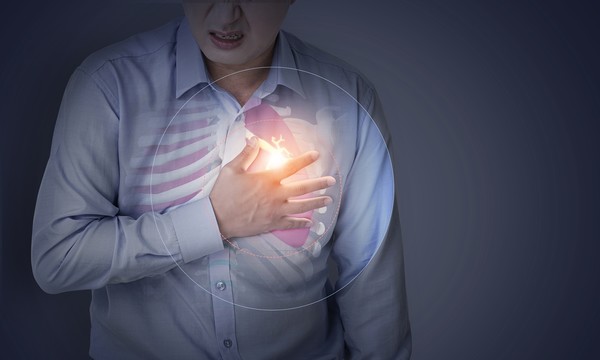
Over the past five years, the cost of heart disease treatment has increased by 38.5 percent in Korea. Medical expenses increased in all age groups, but the increase was especially pronounced for those under 30.
On Tuesday, the Health Insurance Review and Assessment Service (HIRA) released the results of its analysis of heart disease treatment from 2018 to 2022.
According to the report, the number of heart disease patients increased by 20.8 percent, or 4.6 percent on average annually, from 1,593,537 in 2018 to 1,833,320 in 2022. The medical expenses increased by 38.5 percent (8.5 percent in compound annual growth rate, or CAGR) from 1.83 trillion won ($1.36 billion) to nearly 2.54 trillion won during the same period.
In 2022, the highest proportion of heart disease patients was among those aged 80 and over, accounting for 15.47 percent and totaling 340,035, followed by those in their 70s, 13.53 percent (517,731), and those in their 60s, 7.37 percent (545,854).
In the last five years, the share of heart disease patients in the population by age has increased in all age groups, especially in the 30s and younger.
By type of heart ailment, the number of patients with ischemic heart disease, which accounts for 56.1 percent of heart disease, increased by 13.8 percent (CAGR of 3.3 percent) from 912,000 in 2018 to 1027,842 in 2022. Its medical expenses increased by 25.7 percent (CAGR of 5.9 percent) from 988.3 billion won to 1.24 trillion won over the same period.
In 2022, the age groups with the highest proportion of ischemic heart disease patients were the 70s, with 8.09 percent (309,533), followed by 80s and above, with 7.61 percent (171,614), and 60s, with 4.7 percent (347,964).
There was a significant increase in the proportion of ischemic heart disease patients in the 20s and younger, while the comparable share declined between the 40s and 60s.
Over the past five years, the numbers of patients with chronic ischemic heart disease (29.3 percent) and myocardial infarction (19.6 percent) have increased, while that of patients with certain existing complications after acute myocardial infarction has decreased by 29.9 percent.
The analysis of trends in the treatment of angina and myocardial infarction, two common conditions of ischemic heart disease, showed that the number of patients with angina increased by 6.0 percent (CAGR of 1.5 percent) and that of patients with myocardial infarction increased by 19.6 percent (CAGR of 4.6 percent) over the past five years.
The number of patients undergoing percutaneous coronary intervention (PCI) increased by 3.8 percent (CAGR of 0.9 percent), and coronary artery bypass graft increased by 8.1 percent (CAGR of 2.0 percent) for the most common surgical procedures for patients with angina and myocardial infarction.
The total cost of percutaneous coronary interventions increased 27.0 percent (CAGR of 6.2 percent) from 102.7 billion won to 130.4 billion won over the past five years, and the per capita cost increased 22.3 percent (CAGR of 5.2 percent) from 1.88 million won to 2.3 million won.
Total medical expenses for coronary artery bypass graft surgery increased by 13.9 percent (CAGR of 3.3 percent) from 20.1 billion won to 22.9 billion, and per capita medical expenses increased by 5. percent (CAGR of 1.4 percent) from 9,29 million won to 9.81 million own.
The number of patients with arrhythmia, a common heart disease, increased by 25.0 percent (CAGR of 5.7 percent) from 370,822 in 2018 to 463,538 in 2022, and total annual medical expenses increased by 61.6 percent (CAGR of 12.7 percent) from 247 billion won to 399.2 billion won over the same period.
In 2022, the proportion of people with arrhythmia disease was 3.73 percent (84,198 people) among 80s and older, 3.23 percent (123,460) in their 70s, and 1.66 percent (123,268) in their 60s, with a significant increase in the number of people in their teens and 20s over the past five years.
Over the past five years, the number of patients who underwent arrhythmia surgery after being diagnosed with arrhythmia disease increased by 36.5 percent (CAGR of 8.1 percent). Total annual medical expenses increased by 78.3 percent (CAGR of 15.5 percent) from 23.2 billion won to 41.4 billion won. Per capita medical expenses increased by 30.6 percent (CAGR of 6.9 percent) from 2.63 million won to 3.43 million won.
"According to the past five-year treatment records, most patients with heart disease are over 50 years old, but the percentage of patients in their teens and 20s is increasing most rapidly," said Ha Gu-ja, head of the Reimbursement Information and Analysis Office at HIRA.
"To prevent the disease, it is important to take steady health care, such as regular exercise and diet, and receive regular checkups. If there are any abnormalities, it is important to seek medical treatment based on the medical judgment of a professional, Ha added.

